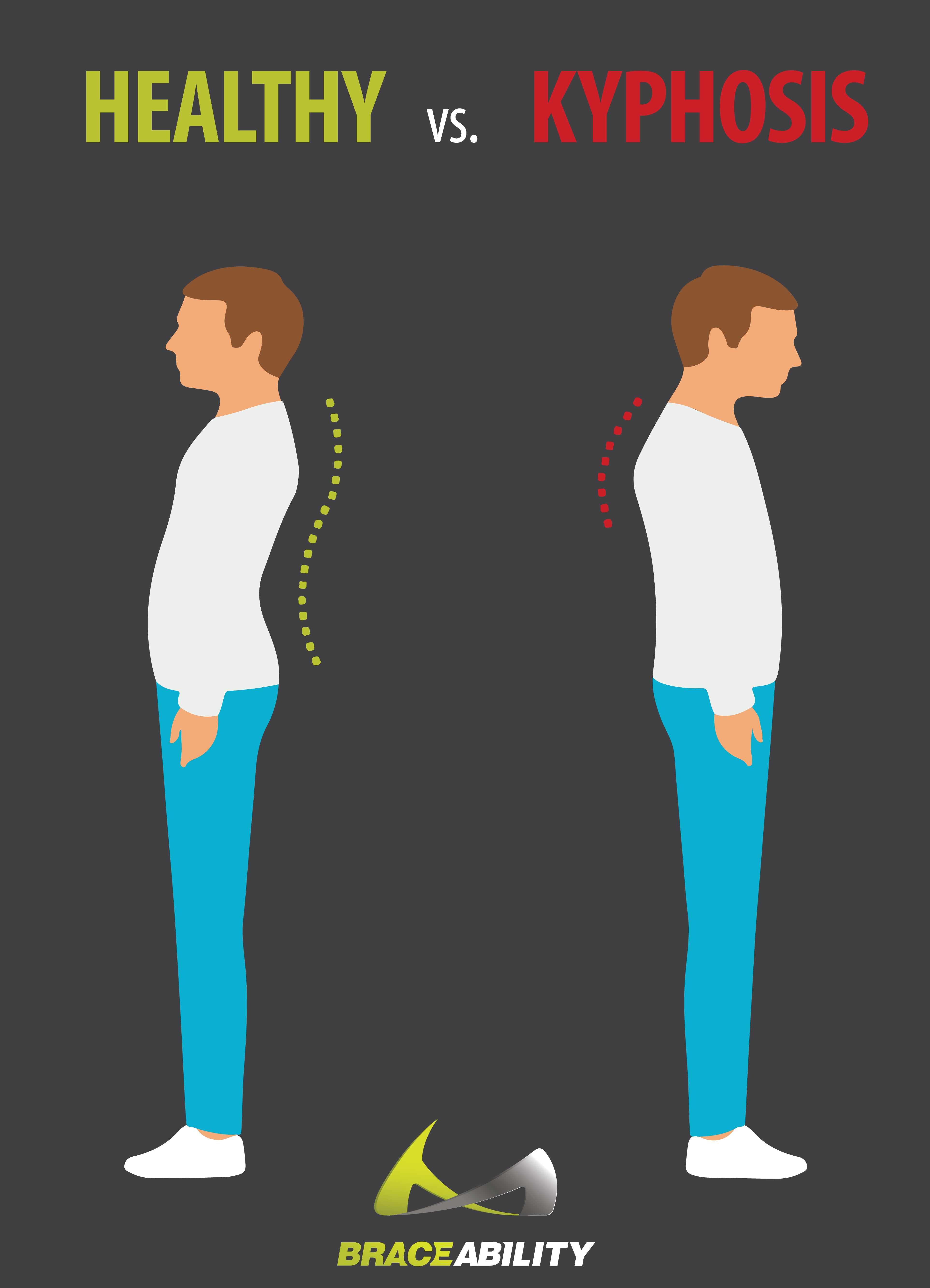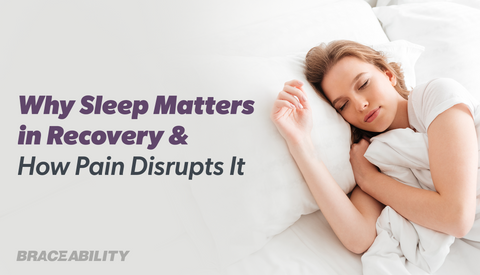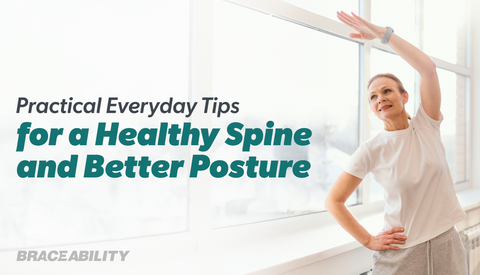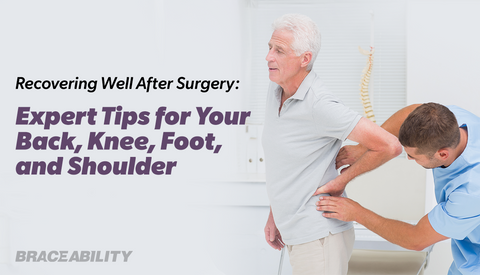Thoracic & Cervical Kyphosis of the Spine
What is Kyphosis & Who Does it Affect?
Although it may be hard to tell from the front, your healthy spine has two natural curves, one going forward called “kyphosis” and the reverse curve called “lordosis.” Both of these natural curves help your spine to sit, stand, walk, etc. They give you the ability to balance your shifting weight throughout the day depending on what you’re doing.

Kyphosis is a common condition resulting in an exaggerated forward rounding of your upper back, or thoracic region. Compared to these natural curves which have a curvature around 20-50 degrees, kyphosis has an excess curve greater than 50 degrees. This causes your spine to hunch over and make you appear to be slouching.
Kyphosis can occur at any age. More commonly, this condition affects older women because they are more likely to suffer from osteoporosis. Osteoporosis can weaken the spinal bones, leading to the development of kyphosis. Do you suffer from this condition? BraceAbility has a brace specifically for osteoporosis. Read more about the different kinds of lower back pain in women.
Aside from women, kyphosis can be found in teens or infants due to having a deformity in the spine or a result of wedging of the spinal bones.
How Do I Know If I Have Kyphosis in my Spine? What Are Some Symptoms?
Do you think you have a form of kyphosis? Depending on the severity and the causation of your pain, there are a few common symptoms that can occur:
- Difficulty breathing (severe case)
- Fatigue
- Mild back pain
- Rounded back
- Tenderness/soreness around the spinal area
In some mild cases, however, there are no noticeable signs or symptoms.
Do you think you have a different back problem or injury?
What Causes Kyphosis?
Kyphosis can be a result of many different health problems or birth defects such as:
- Osteoporosis: Condition that results in your bones being brittle and weak, making it easier for them to fracture or break. This occurs when the formation of new bone in your body can keep up with the removal of the old bone.
- Disk degeneration: As we become older, the discs around our spine become weaker and break down, which can result in degenerative disc disease.
- Birth defects: When babies are growing in the womb, their spinal cord has a possibility of not developing properly.
- Cancer/cancer treatments: Radiation and chemotherapy may cause the spine to weaken and become frail, making you more prone to fractures or injuries.
Types of Kyphosis: Congenital, Postural and Scheuermann's
While kyphosis looks similar in most individuals, there are different forms or types of this condition. These forms are usually classified as postural or structural. Postural is caused by poor posture or slouching overtime whereas structural is caused by a birth defect.
Three main types of kyphosis:
- Congenital Kyphosis: Result of malformation of the spinal cord while growing inside of the womb. Occurs in infants and young kids.
- Treatment: Usually requires surgery to correct the child's spine at a young age. Surgery helps prevent future deformities in the spinal area.
- Category: Structural
- Postural Kyphosis: Resulted from poor posture and slouching overtime. Occurs at any age, but is more prevalent in women. This is the most common type of kyphosis.
- Treatment: Exercises, physical therapy, and posture braces
- Category: Postural
- Scheuermann’s Kyphosis Disease: Occurs in children or adolescents that have experienced abnormal growth patterns in their spine. Along with kyphosis, this disease is usually paired with having scoliosis (sideways curvature of the spine).
- Treatment: Medical braces, exercises, physical therapy, and occasionally surgery.
- Category: Structural
Other types of kyphosis include:
- Degenerative kyphosis: Results overtime from excess strain and stress on the spine.
- Treatment: Exercise, physical therapy, and sometimes surgery can be an option.
- Category: Structural
- Neuromuscular kyphosis: Occurs in children who have neuromuscular disorders such as cerebral palsy, spina bifida, or muscular dystrophy.
- Treatment: Based on the individual, surgery may be an option.
- Category: Structural
- Nutritional kyphosis: Occurs at any age, but is more likely to be seen in children or the elderly. It is a result of the lack of certain vitamins and nutrients such as vitamin D.
- Treatment: Talk to your physician or nutritionist for a plan to help get a surplus of those key ingredients you’ve been missing. Physical therapy and exercise will also help.
- Category: Structural
- Iatrogenic kyphosis: Result of a surgical complication to the spine.
- Treatment: Depending on severity, another surgery may be required to help fix the complication.
- Category: Structural
Need a back brace support to help ease the pain from your kyphosis condition? Check out all of our kyphosis back braces made just for you!
What's the Difference Between Lordosis, Kyphosis, & Scoliosis?
Lordosis, kyphosis, and scoliosis are commonly confused between each other. Each is a different type of spine curvature disorders. They vary in different symptoms, treatments, and causes.

- Lordosis: The spine curves inward at the lower back area
Causes: Osteoporosis, obesity, kyphosis, and achondroplasia (bones not growing normally, usually results in dwarfism)
Symptoms: Back pain and discomfort, problems moving, and a gap in between the lower back and the floor when you’re lying down
Treatments: Medications, exercise, physical therapy, weight loss, back braces, and surgery
- Kyphosis: Abnormal rounding at the upper dorsal side of your back
Causes: Poor posture, Scheuermann's disease, arthritis, & osteoporosis, birth defects, and cancer
Symptoms: Hump in your back, fatigue, and stiffness
Treatments: Exercise, back braces, surgery, and physical therapy
- Scoliosis: Sideway curve (s-shaped/c-shaped) of the spine
Causes: Cerebral palsy, muscular dystrophy, and other neuromuscular conditions
Symptoms: Uneven shoulder blades, uneven waist or hips, and leaning to one side
Treatments: Bracing or surgery
Exercises to Help Ease Your Pain from Kyphosis
Along with other treatments including physical therapy, back braces, and surgery, exercise is a key component towards reducing the pain caused by kyphosis. There are many simple exercises we recommend to help ease your pain.
- Superman: Lay on the ground on your stomach with your arms above your head. Lift your legs and arms toward the ceiling, helping to stretch your back. Hold this position for up to 10 seconds, and repeat 10 times or as many times as you feel comfortable.
- Thoracic Foam Roller: Using a foam roller, lay on your back and slowly roll back and forth on your back.
- Extension: Stand up tall and straight, then reach your arms above your head making a “Y” figure. While holding that position, exhale and inhale while maintaining your posture.
- Chin Tuck: When you’re standing or sitting, rest two fingers on your chin and push your head and chin back. Hold for three seconds and repeat 10 times.
- Wall Angel: Stand with your back flat against the wall with your arms up and elbows bent. Squeeze your shoulder blades together, forming a “W” with your arms. Hold for three seconds, repeating it up to 10 times.










